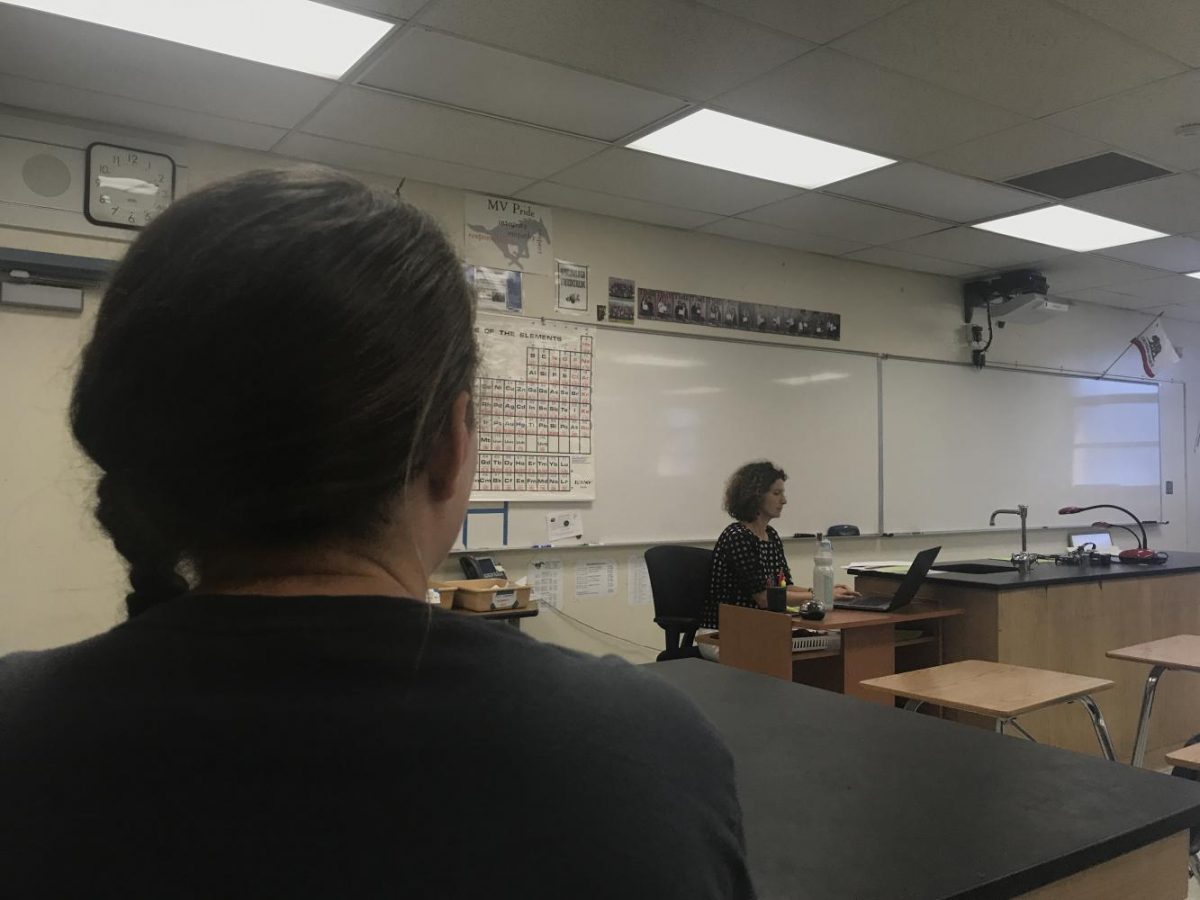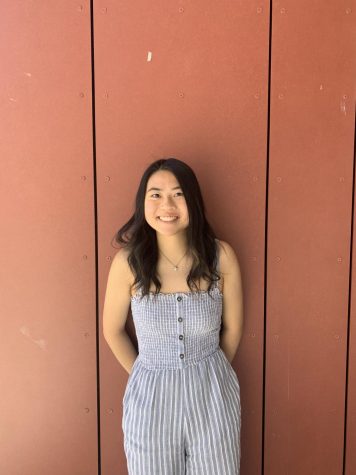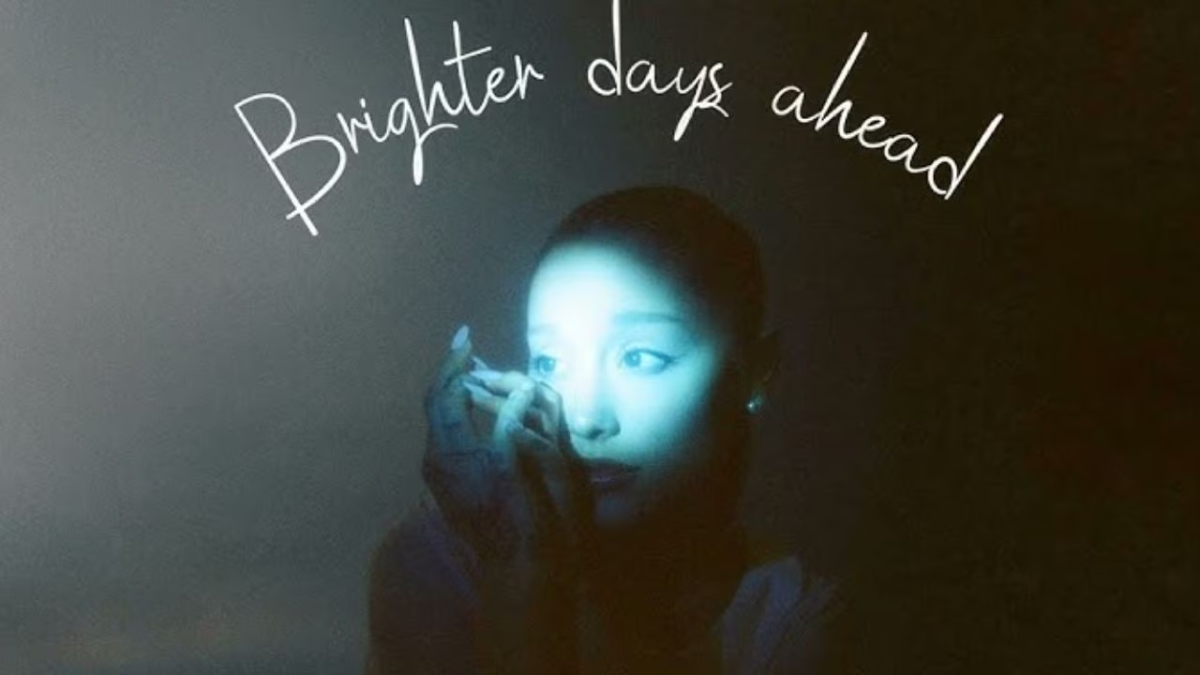Low funds are affecting class sizes
Caption: In an Honors Chemistry class, sophomore Sabeel Abboushi sits at a lab table while all the other students sit at a student desk due to a large class. She discovered the challenge of learning at this seat for the first weeks of school. (Courtesy of Claire Chu)
October 5, 2017
With over 2,450 students at Monte Vista this year, classes are increasing in size due to the district’s restricted funding.
San Ramon Valley Unified School District’s (SRVUSD) class funding policy follows the 28-to-1 student-to-teacher ratio. SRVUSD only funds sections that are 28 students or more during a six-period day. The rest of funding, including zero period classes, comes from Academic Boosters.
Currently, most classes are nearly 10 students over the ratio while others are below.
“My sixth period has gone from 37 to 35 students, but students have been added to my first, second, and third periods,” sophomore and junior English teacher Katelynn Beamish said. “Many English classes are also well over the student-to-teacher ratio.”
Student counselor Janelle Mincy is in close contact with the administration and describes where this issue is stemming from.
“It just comes down to the funding,” Mincy said. “Other districts get around that by having outside funding along with union contracts that have a class size max. As far as state funding, SRVUSD does what they can.”
New classes with fewer than 28 student sign-ups are dropped because there is not enough funding to support small classes. As a result, this creates larger general-education classes, such as English and history, because there are changes made to the students’ schedules.
Mincy further explains principal Kevin Ahern’s view on this process.
“Dr. Ahern wants around 30 students per class, and some new classes are above that while some are below that,” Mincy said. “That is an administrative decision whether or not the class gets cancelled. If it gets cancelled, then those kids get shifted to whatever their alternate choice was, usually affecting required courses.”
With larger classes, it is difficult for teachers to reach their students’ individual needs.
“There’s so much need from every single student, and to get to know 36 students individually is difficult enough,” Beamish said. “It’s much better to learn from someone who cares about you, and that has become difficult with huge classes.”
On the other hand, hiring more teachers is not an alternative option to benefit this issue. Monte Vista and SRVUSD can only hire teachers for specific subjects.
“We can only hire staff when we have the allocated sections to hire,” Mincy said. “Our Japanese teacher retired, so a new teacher was hired. When English teachers leave, more get hired based on how many left.”
With the standard number of teachers and accumulating number of students, it isn’t an effective learning environment. Sophomore Sabeel Abboushi had to sit at a lab station in the corner of an Honors Chemistry classroom. Until another student transferred out, she couldn’t sit in a student desk. She struggled focusing during the first few weeks of class.
“Since the lab tables are against the wall at an angle, it was very hard to see what the teacher was writing on the board because her back was always towards me,” Abboushi said. “Sitting at this seat was a very bad experience that affected my ability to learn because I had to make so many adjustments.”
As challenging as it is for administration, teachers, and students to adapt to the rise in class sizes and decline in funding, it’s also difficult to fix the problem.
“It’s in everyone’s best interest to decrease class sizes, but it’s all determined by the funding,” Mincy said. “There’s no easy solution, so it’s all very complicated.”













